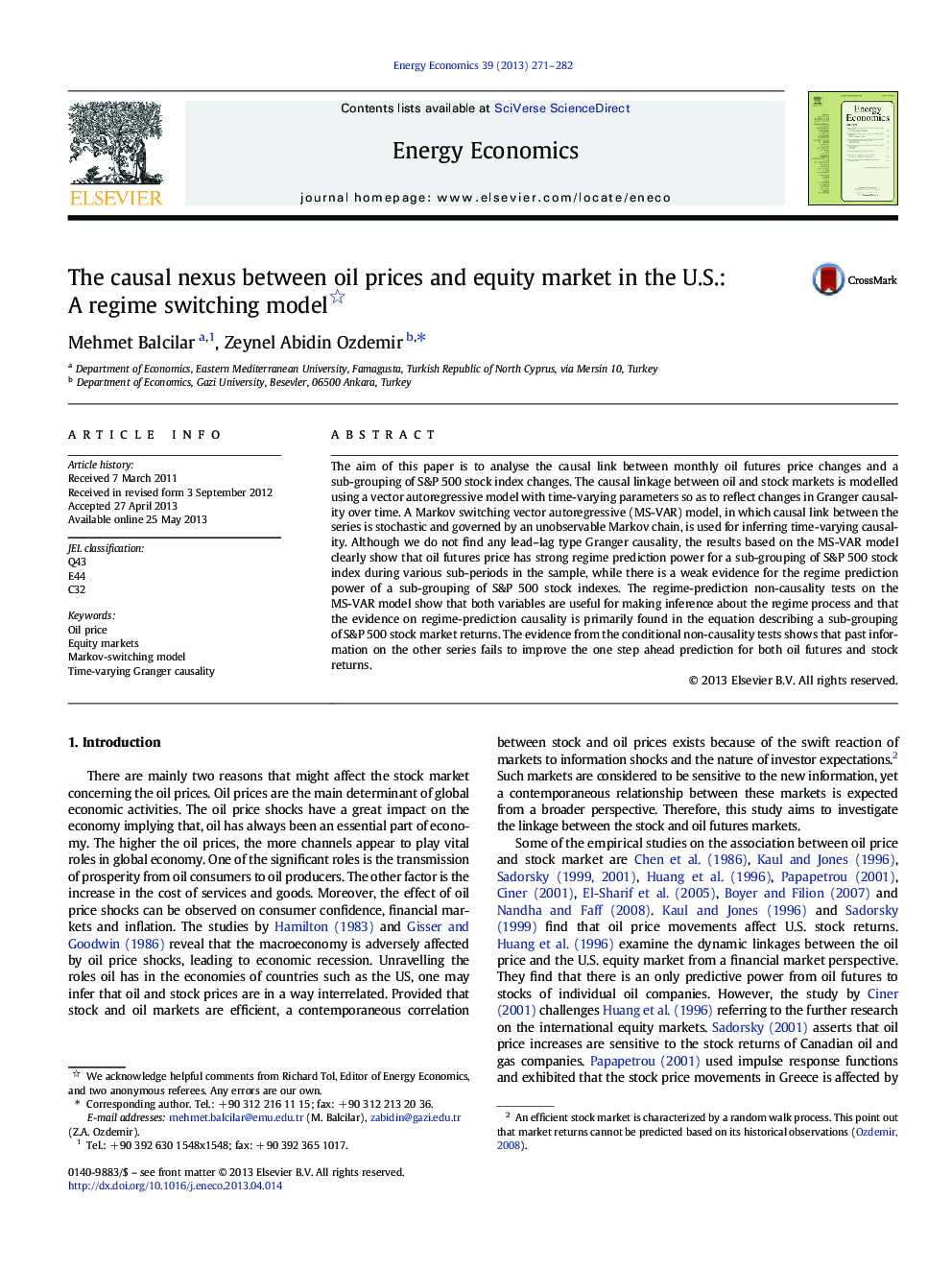| کد مقاله | کد نشریه | سال انتشار | مقاله انگلیسی | نسخه تمام متن |
|---|---|---|---|---|
| 5064973 | 1476724 | 2013 | 12 صفحه PDF | دانلود رایگان |

- We analyse the causal links between oil futures price and a sub-grouping of S&P 500 index.
- The causal links are modelled using a regime switching model.
- We do not find any lead-lag type Granger causality between the series.
- The results show that oil futures price has regime prediction power for a sub-grouping of S&P 500 stock index.
The aim of this paper is to analyse the causal link between monthly oil futures price changes and a sub-grouping of S&P 500 stock index changes. The causal linkage between oil and stock markets is modelled using a vector autoregressive model with time-varying parameters so as to reflect changes in Granger causality over time. A Markov switching vector autoregressive (MS-VAR) model, in which causal link between the series is stochastic and governed by an unobservable Markov chain, is used for inferring time-varying causality. Although we do not find any lead-lag type Granger causality, the results based on the MS-VAR model clearly show that oil futures price has strong regime prediction power for a sub-grouping of S&P 500 stock index during various sub-periods in the sample, while there is a weak evidence for the regime prediction power of a sub-grouping of S&P 500 stock indexes. The regime-prediction non-causality tests on the MS-VAR model show that both variables are useful for making inference about the regime process and that the evidence on regime-prediction causality is primarily found in the equation describing a sub-grouping of S&P 500 stock market returns. The evidence from the conditional non-causality tests shows that past information on the other series fails to improve the one step ahead prediction for both oil futures and stock returns.
Journal: Energy Economics - Volume 39, September 2013, Pages 271-282